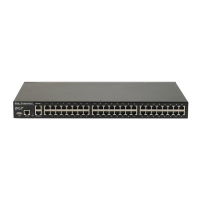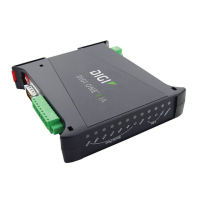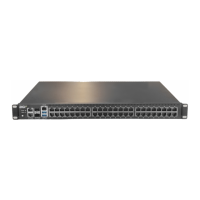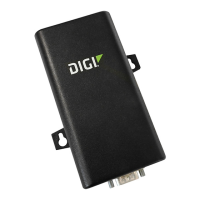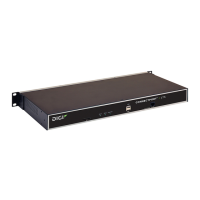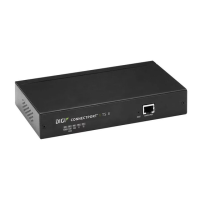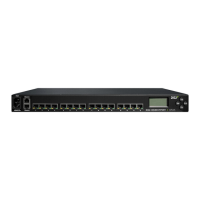90030500B Configuring TCP/IP Routing Page 145
During passive routing, there are two ways by which PortServer II can inform other
systems about routes that pass through its interfaces.
One is to send RIP (Routing Information Protocol) packets to other systems. RIP
packets are only sent to other systems if you configure
active
forwarding.
The second method is by means of the Proxy ARP (Address Resolution Protocol),
which determines a route to an unknown IP address via a known IP address on the
same subnet. If proxy ARP is used, PortServer II can respond to ARP requests for
addresses if it knows of a route to the subnet’s IP address through any of its WAN
interfaces or the Ethernet interface. For example, if a dial-in user has an address on
the same subnet as PortServer II, hosts on the same Ethernet interface as PortServer II
can “ARP” for the IP address of the dial-in user, and PortServer II will respond to the
ARP request with its Ethernet address.
By default, PortServer II provides static routing transferring packets to and from a
single device connected to a serial port.
Description of Passive routing
PortServer II routes packets through the Ethernet connection and serial ports. It routes
default routes, static routes, and routes learned from other routes, but does not propa-
gate these routes. The proxy ARP may be used to allow devices on the Ethernet to
communicate with devices on PortServer II’s serial ports. The proxy ARP handles
routing tasks such as the conversion of IP addresses to Ethernet addresses.
Description of Active routing
PortServer II learns the routes being propagated, stores them in the Route Table, and
propagates static routes, passive routes, and routes learned from other routers.
PortServer II sets and propagates dynamic Route Table entries using RIP. Three
timers determine how these entries are manipulated - an
advertise
timer, a
timeout
timer, and an internal timer. The
advertise
timer controls how frequently RIP packets
are broadcast to advertise the Route Table state. The
timeout
timer controls how long
an entry remains in the Route Table if PortServer II does not receive an update from
the route. If it is not updated in the set time, the entry is marked as invalid and, after a
further two minutes, removed by the internal timer.
Note:
Each WAN connection can function differently, depending on whether it is
configured to send, listen, or both:
